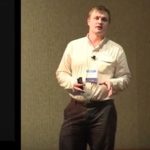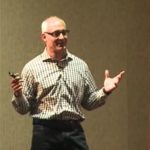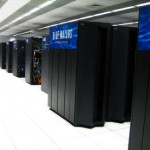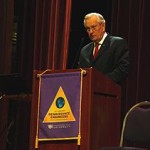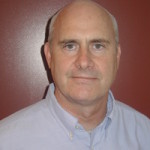Wen-mei Hwu from the University of Illinois at Urbana-Champaign presented this talk at the Blue Waters Symposium. “In the 21st Century, we are able to understand, design, and create what we can compute. Computational models are allowing us to see even farther, going back and forth in time, learn better, test hypothesis that cannot be verified any other way, and create safe artificial processes.”
Video: Parallel I/O Best Practices
In this video from the 2016 Blue Waters Symposium, Andriy Kot from NCSA presents: Parallel I/O Best Practices.
Pete Ungaro Presents: Blue Waters & the Cray Roadmap
Peter Ungaro presented this talk at the 2016 Blue Waters Symposium. “Built by Cray, Blue Waters is one of the most powerful supercomputers in the world, and is the fastest supercomputer on a university campus. Scientists and engineers across the country use the computing and data power of Blue Waters to tackle a wide range of challenging problems, from predicting the behavior of complex biological systems to simulating the evolution of the cosmos.”
Register Now for HPC Workflow Workshops
Registration is now open for a free Workflows Workshop to be held August 9-10 at multiple institutions across the country. Sponsored by the Blue Waters sustained-petascale computing project, this workshop will provide an overview of workflows and how they can enhance research productivity.
Apply Now for Blue Waters Graduate Fellowships
NCSA is now accepting applications for the Blue Waters Graduate Program. This unique program lets graduate students from across the country immerse themselves in a year of focused high-performance computing and data-intensive research using the Blue Waters supercomputer to accelerate their research.
Video: From Megaflop to Petaflop and Beyond
“Over the three decades supercomputer throughput rates have increased dramatically from 100s of MFLOPs in 1985 to tens of PFLOPS today, making U.S. universities pre-eminent in the world in computational S&E, which is a tribute to both NSF and Centers’ dedication and leadership. Looking ahead to the impacts of synaptic computing, high-performance computing coupled with data analysis, and cloud computing coupled with the Internet of Things (IOT), the challenges and opportunities in computational S&E in all sectors of U.S. Society is projected to advance dramatically.”
Petascale Research in Earthquake Science on Blue Waters
“SCEC’s multi-disciplinary research team is using NCSA Blue Waters to develop physics-based computational models of earthquake processes. During the past year, we integrated more realistic physics into our computational software to model frequency dependent attenuation, small-scale heterogeneities, free-surface topography, and non-linear yielding effects, all of which become increasingly important when simulating high frequency ground motions.”
Video: First Galaxies and Quasars in the BlueTides Simulation
“BlueTides has successfully used essentially the entire set of XE6 nodes on the Blue Waters. It follows the evolution of 0.7 trillion particles in a large volume of the universe (600 co-moving Mpc on a side) over the first billion years of the universe’s evolution with a dynamic range of 6 (12) orders of magnitude in space (mass). This makes BlueTides by far the largest cosmological hydrodynamic simulation ever run.”


